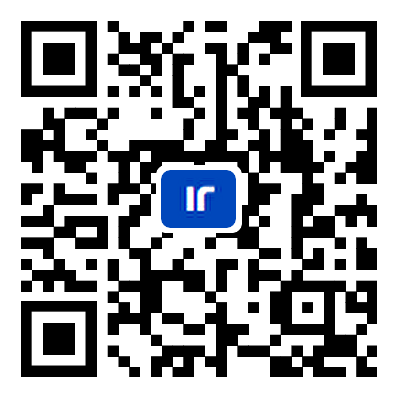The cooperatability of the first-order multi-agent systems consisting of a leader and a follower with multiplicative noises under Markov switching topologies
Abstract
We investigate the cooperatability of the first-order leader-following multi-agent systems consisting of a leader and a follower with multiplicative noises under Markov switching topologies. Each agent exhibits first-order linear dynamics, and there are multiplicative noises along with information exchange among the agents. What is more, the communication topologies are Markov switching topologies. By utilizing the stability theory of the stochastic differential equations with Markovian switching and the Markov chain theory, we establish the necessary and sufficient conditions for the cooperatability of the leader-following multi-agent systems. The conditions are outlined below: (ⅰ) The product of the system parameter and the square of multiplicative noise intensities should be less than 1/2; (ⅱ) The transition rate from the unconnected graph to the connected graph should be twice the system parameter; (ⅲ) The transition rate from the connected graph to the unconnected graph should be less than a constant that is related to the system parameter, the intensities of multiplicative noises, and the transition rate from the unconnected graph to the connected graph. Finally, the effectiveness of our control strategy is demonstrated by the population growth systems.
Keywords
1. INTRODUCTION
In the past few decades, distributed cooperative control of multi-agent systems under fixed topologies has attracted much attention from the system and control community [ 1– 3] . However, in practical systems, the communication networks connecting the agents often experience sudden interruptions and restoration. These mutations lead to the changes in the structures or parameters of the system. Here, we describe this changing topology by the Markovian switching topology. For such systems, we usually use the Markov switching systems to describe them. In recent years, the stability of linear Markov switching systems has been widely studied [ 4– 8] . By Kronecker product and Lyapunov exponent, Mariton et al. [ 4] gave the necessary and sufficient conditions for the moment stability and the almost sure stability of the system, respectively. Feng et al. [ 5] studied the stochastic stability of the system and revealed the relationship between the moment stability and the almost sure stability. Feng et al. [ 6] studied the stabilization problem. The literature [ 7, 8] investigated the robust stability problems and gave sufficient and necessary conditions in the form of linear matrix inequalities for the mean square stability.
In many real-world systems, it is inevitable for systems to be subjected to random noises
[
9]
. These noises may change the trajectory of the system and even affect its stability. Therefore, an increasing number of researchers have focused on studying the stability of the Markov switching stochastic systems. The stability of linear Markov switching systems with stochastic noises was studied in previous literature
[
10–
12]
. Fragoso
et al.
[
10]
studied the Markov switching systems with additive noises and provided the necessary and sufficient conditions for the mean square stability of the system. On the other hand, the literature
[
11,
12]
explored the Markov switching systems with multiplicative noises. By employing the operator theory, Dragan
et al.
[
11]
derived the necessary and sufficient conditions in the form of linear matrix inequalities for the mean square stability. Similarly, Sheng
et al.
[
12]
, also using the operator theory, presented a new necessary and sufficient condition for the mean square stability. Using the Lyapunov method, Mao
et al.
[
13]
established a sufficient condition for the
The stability theory of Markov switching systems with noises has numerous practical applications [ 15– 17] . Previous studies [ 18– 22] have focused on the distributed control problem of multi-agent systems with random noises under Markov switching topologies. The literature [ 18, 19] studied the distributed control problem of discrete-time multi-agent systems. By the state space decomposition method, Huang et al. [ 18] gave a sufficient condition for almost sure consensus and mean square consensus, respectively. Zhang et al. [ 19] studied the mean square consensus problem. The literature [ 20– 22] considers the distributed control problem of continuous-time multi-agent systems. Zhang et al. [ 20] studies the distributed control problem of multi-agent systems with first-order integrator dynamics. Li et al. [ 21] studied the containment control problem. Wang et al. [ 22] studied mean square consensus and almost sure consensus of higher-order multi-agent systems.
Compared with additive noises, multiplicative noises play a stabilizing role in the almost sure stability of systems [ 23] . Many scholars have studied the distributed control problem of multi-agent systems with multiplicative noises [ 24– 28] . However, as the state of the system is related to the Markov chain, we cannot write the expectation of the product of the state variable and the indicative function in the form of the expected product. This leads to the fact that the distributed control problem of multi-agent systems with multiplicative noises under the Markov switching topology has not yet been solved. As a preliminary study, we study the cooperatability of the first-order leader-following multi-agent systems consisting of a leader and a follower with multiplicative noises under Markov switching topologies. Each agent has first-order linear dynamics, and there are multiplicative noises along with information exchange among agents. What is more, the communication topologies are Markov switching topologies. Compared with existing literature [ 24– 28] , we have revealed the influence of multiplicative noises and switching rates on the cooperatability of the system. To analyze this influence, we delve into the stability theory of Markov switching systems with noises. Therefore, we introduced a new lemma to address this issue. We establish the necessary and sufficient conditions for the cooperatability of the leader-following multi-agent systems by combining the stability theory of the stochastic differential equation with Markovian switching and the Markov chain theory. These conditions are outlined below: (ⅰ) The product of the system parameter and the square of multiplicative noise intensities should be less than 1/2; (ⅱ) The transition rate from the unconnected graph to the connected graph should be twice the value of the system parameter; (ⅲ) The transition rate from the connected graph to the unconnected graph should be lower than a constant, which is related to the system parameter, the intensity of multiplicative noises, and the transition rate from the unconnected graph to the connected graph.
The remaining sections of this paper are structured as follows: Section 2 formulates the problem. Section 3 presents the admissible cooperative distributed control strategy. Section 4 provides the main result. Section 5 includes a numerical simulation to demonstrate the effectiveness of our control laws. Section 6 concludes the paper.
Notation: The symbols
2. PROBLEM FORMULATIONS
Consider a leader-following multi-agent system consisting of a leader and a follower, where the leader and the follower are indexed by 0 and 1, respectively. The dynamics of the leader is given by
where
The dynamics of the follower is given by
where
In this section, we assume that the topology graph is a Markovian switching topology. Let the switching signal
where if
3. ADMISSIBLE DISTRIBUTED COOPERATIVE CONTROL STRATEGY
In the real network, the relative state measurement information obtained by the follower from the leader is often affected by noises. Therefore, for the leader
where
We consider the following set of admissible distributed cooperative control strategies based on
This paper primarily focuses on investigating the necessary and sufficient conditions for the cooperatability of the first-order leader-following multi-agent systems. These systems are composed of a leader and a follower and are subjected to multiplicative noises under Markov switching topologies.
The assumption and lemma required in this section are given below.
Assumption 1 The noise process
Lemma 1[ 12] The solution of the Markov switching stochastic differential equations
is mean square stable if and only if
4. MAIN RESULTS
By leveraging the stability theory of stochastic differential equations with Markovian switching and the Markov chain theory, we provide the necessary and sufficient conditions for the cooperatability of the leader-following multi-agent systems.
Theorem 1 Suppose Assumption 1 is satisfied. In that case, there exists an admissible cooperative control strategy denoted by
Proof: Denote
where if
Denote
Necessity: If there exists an admissible cooperative control strategy denoted by
Noting that
Denote
Condition
Condition
By Condition
In the following, we discuss the Conditions
(1) If
(2) If
By
This contradicts Condition
(3) If
By
By Condition
By
which implies
By
Denote
Sufficiency: By
Remark 1 The conditions
We have the following corollary for the case without measurement noises.
Corollary 1 Suppose Assumption 1 and
5. NUMERICAL SIMULATION
In this section, we will use a numerical example to demonstrate the effectiveness of our control laws.
Referring to the literature
[
29]
, the population growth system is given by
The communication topology graphs are shown in
Figure 1, and the trajectory of the Markov chain
If we choose
6. CONCLUSION
In this paper, we have studied the cooperatability of the first-order leader-following multi-agent systems that consist of a leader and a follower. The systems are subjected to multiplicative noises under Markov switching topologies. Each agent in this system follows first-order linear dynamics, and there are multiplicative noises along with information exchange among agents. Additionally, the communication topologies are characterized by Markov switching. By employing the stability theory of the stochastic differential equation with Markovian switching and the Markov chain theory, we have established the necessary and sufficient conditions for achieving the cooperatability in the leader-following multi-agent systems. Furthermore, there are several other interesting topics that can be explored in future research. For instance, it would be valuable to investigate the cooperatability of the leader-following multi-agent systems with both multiplicative noises and delays under Markov switching topologies
DECLARATIONS
Authors' contributions
Made substantial contributions to the research and investigation process, reviewed and summarized the literature, and wrote and edited the original draft: Li D
Performed oversight and leadership responsibility for the research activity planning and execution and performed critical review, commentary, and revision: Li T
Availability of data and materials
Not applicable.
Financial support and sponsorship
Not applicable.
Conflicts of interest
All authors declared that there are no conflicts of interest.
Ethical approval and consent to participate
Not applicable.
Consent for publication
Not applicable.
Copyright
© The Author(s) 2023.
REFERENCES
1. Mao J, Huang S, Xiang Z, Wang Y, Zheng D. Practical finite‐time sampled‐data output consensus for a class of nonlinear multiagent systems via output feedback. Int J Robust Nonlinear Control 2021;31:920-49.
2. Mao J, Yan T, Huang S, Li S, Jiao J. Sampled‐data output feedback leader‐following consensus for a class of nonlinear multi‐agent systems with input unmodeled dynamics. Int J Robust Nonlinear Control 2021;31:4203-26.
3. Shang Y, Ye Y. Leader-follower fixed-time group consensus control of multiagent systems under directed topology. Complexity 2017;2017:1-9.
4. Mariton M. Almost sure and moments stability of jump linear systems. Syst Control Lett 1988;11:393-7.
5. Feng X, Loparo K, Ji Y, Chizeck H. Stochastic stability properties of jump linear systems. IEEE Trans Automat Contr 1992;37:38-53.
6. Fang Y, Loparo K. Stabilization of continuous-time jump linear systems. IEEE Trans Automat Contr 2002;47:1590-603.
7. El Ghaoui L, Rami MA. Robust state feedback stabilization of jump linear systems via LMIs. Int J Robust Nonlin Contr 1996;6:1015-22.
8. Costa OLV, Boukas EK. Necessary and sufficient condition for robust stability and stabilizability of continuous-time linear systems with markovian jumps. J Optim Theory Appl 1998;99:359-79.
9. Somarakis C, Motee N. Aggregate fluctuations in networks with drift-diffusion models driven by stable non-gaussian disturbances. IEEE Trans Control Netw Syst 2020;7:1248-58.
10. Fragoso MD, Costa OL. A unified approach for mean square stability of continuous-time markovian jumping linear systems with additive disturbances. In: Proceedings of the 39th IEEE Conference on Decision and Control, Sydney, Australia, 12-15 December, 2000, pp. 2361-2366.
11. Dragan V, Morozan T, Stoica AM. Mathematical methods in robust control of linear stochastic systems New York, USA: Springer; 2006.
12. Sheng L, Gao M, Zhang W. Spectral characterisation for stability and stabilisation of linear stochastic systems with Markovian switching and its applications. IET Control 2013;7:730-7.
13. Mao X. Stability of stochastic differential equations with Markovian switching. Stoch 1999;79:45-67.
14. Deng F, Luo Q, Mao X. Stochastic stabilization of hybrid differential equations. Automatica 2012;48:2321-8.
15. Shang Y. Consensus seeking over Markovian switching networks with time-varying delays and uncertain topologies. Appl Math Comput 2016;273:1234-45.
16. Shang Y. Couple-group consensus of continuous-time multi-agent systems under Markovian switching topologies. J Franklin Inst 2015;352:4826-44.
17. Shang Y. Consensus of noisy multiagent systems with markovian switching topologies and time-varying delays. Math Probl Eng 2015;2015:1-13.
18. Huang M, Dey S, Nair GN, Manton JH. Stochastic consensus over noisy networks with Markovian and arbitrary switches. Automatica 2010;46:1571-83.
19. Zhang Y, Tian Y. Consentability and protocol design of multi-agent systems with stochastic switching topology. Automatica 2009;45:1195-201.
20. Zhang Q, Zhang JF, Zhang Q, Zhang JF. Distributed consensus of continuous-time multi-agent systems with Markovian switching topologies and stochastic communication noises. Int J Math Syst Sci 2011;31:1097-110.
21. Li W, Xie L, Zhang J. Containment control of leader-following multi-agent systems with Markovian switching network topologies and measurement noises. Automatica 2015;51:263-7.
22. Wang Y, Cheng L, Ren W, Hou Z, Tan M. Seeking consensus in networks of linear agents: communication noises and markovian switching topologies. IEEE Trans Automat Contr 2015;60:1374-9.
23. Li T, Wu F, Zhang J. Multi-agent consensus with relative-state-dependent measurement noises. IEEE Trans Automat Contr 2014;59:2463-8.
24. Long Y, Liu S, Xie L. Distributed consensus of discrete-time multi-agent systems with multiplicative noises: consensus of discrete-time multi-agent systems. Int J Robust Nonlin Contr 2015;25:3113-31.
25. Zong X, Li T, Zhang J. Consensus control of discrete-time multi-agent systems with time-delays and multiplicative measurement noises. Scientia Sinica Mathematica 2016;46:1617-36.
26. Ni Y, Li X. Consensus seeking in multi-agent systems with multiplicative measurement noises. Syst Control Lett 2013;62:430-7.
27. Djaidja S, Wu Q. Leader-following consensus for single-integrator multi-agent systems with multiplicative noises in directed topologies. Int J Syst Sci 2015;46:2788-98.
28. Zong X, Li T, Zhang J. Consensus conditions of continuous-time multi-agent systems with time-delays and measurement noises. Automatica 2019;99:412-9.
29. Malthus TR. An Essay on the Principle of Population. Fifth edition, Volume Ⅲ, 1817, London: John Murray.
Cite This Article
How to Cite
Li, D.; Li, T. The cooperatability of the first-order multi-agent systems consisting of a leader and a follower with multiplicative noises under Markov switching topologies. Intell. Robot. 2023, 3, 213-21. http://dx.doi.org/10.20517/ir.2023.13
Download Citation
Export Citation File:
Type of Import
Tips on Downloading Citation
Citation Manager File Format
Type of Import
Direct Import: When the Direct Import option is selected (the default state), a dialogue box will give you the option to Save or Open the downloaded citation data. Choosing Open will either launch your citation manager or give you a choice of applications with which to use the metadata. The Save option saves the file locally for later use.
Indirect Import: When the Indirect Import option is selected, the metadata is displayed and may be copied and pasted as needed.
About This Article
Special Issue
Copyright
Data & Comments
Data



















Comments
Comments must be written in English. Spam, offensive content, impersonation, and private information will not be permitted. If any comment is reported and identified as inappropriate content by OAE staff, the comment will be removed without notice. If you have any queries or need any help, please contact us at support@oaepublish.com.